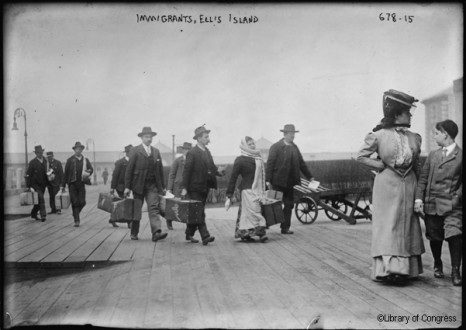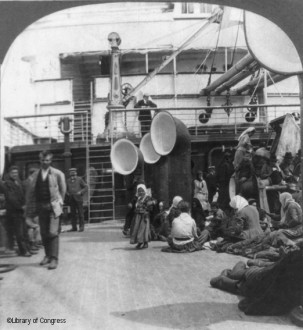The flow of migrants
Cherbourg’s harbour at the heart of migratory flow
A second wave of emigration took place in Europe between 1900 and 1914 and involved migrants essentially from Eastern Europe. Their reasons for emigrating were not only to avoid the economic crisis but also on political or religious grounds. But whatever the motivation, the dream remained the same: finding a better life. Almost 70,000 transatlantic passengers travelled through Cherbourg-Octeville harbour in 1913. This exodus was of course cut off abruptly by the First World War, but resumed again from 1919 on with increased strength. Emigration was nevertheless to be rapidly curtailed and particularly towards the United States, with the creation of a quotas law in 1921. However, it was Black Thursday in 1929 that really brought about the end of this large-scale emigration.

Emigrants, Ellis Island, New York
Migration of Europe towards the United States via Cherbourg
Since 1922, around 48,000 emigrants a year have passed through Cherbourg harbour. These emigrants from all corners of Europe mainly originated from:
- Hungary
- Greece
- Turkey
- Russia
- Poland
- Lithuania
Between 1920 and 1922, more than 400,000 emigrants came through the port and artificial harbour in Cherbourg-Octeville. Of these passengers, all leaving for the new world in the hope of a better life, 25,000 were headed for the United States and North America and 15,000 for South America.
 Emigrants on Baltic, New York |
 Emigrants and theirs baggages, 1913, on S.S.Imperator |





